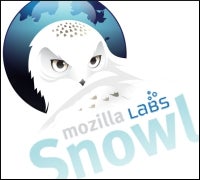 |
Thanks to social networks and tools like Twitter and RSS, online communications today are made up of much more than just simply Web pages. Yet while these technologies have increased the volume of messages on the Internet, they’re not all easily accessed through one of the most-used Internet applications — the Web browser.
That’s where Mozilla’s Snowl comes into play. A number of developers make browser add-ons designed to incorporate social media and RSS feeds, but Snowl, which hit its 0.2 release this week, marks Mozilla’s effort to debut an add-on that ties in closely with its popular Firefox browser.
“Snowl came out of conversations in the Mozilla community starting in 2007 about how to improve messaging on the Internet,” Mozilla developer Myk Melez told InternetNews.com. “Its goal is to find ways to help users track and participate in conversations wherever they happen, not just on social networks.”
Snowl comes as interest hits an all-time high in Web 2.0 media — a loose category of Internet content that includes blogs and RSS-derived content, microblogging services like Twitter and feeds from social networking sites like Facebook and MySpace. Last month, rumors began swirling that Facebook had passed the 160 million-user mark.
For Mozilla, a close embrace of Web 2.0 with Snowl may have an impact beyond simply making it easier for users to access Twitter and similar services: It may actually represent the future of the popular browser.
“Right now, we’re focusing on experimenting with various approaches to integrating messaging into the browser via Snowl,” Melez said. “We’re continuing to develop it as an add-on, and we’ll propose uplifting individual features into Firefox as we validate that those features will improve the browsing experience for a broad cross-set of Firefox users.”
Mozilla makes its move
Snowl is officially a Mozilla Labs project, which is Mozilla’s research and development effort for expanding Web technology. Other Labs efforts include Mozilla Weave for data sharing, Prism for Web applications and Geode for geotagging.
The add-on’s newest iteration includes new message visualization and Twitter features. Mozilla added a stream view to Snowl that enables users to see all of their messages in a browser sidebar. Twitter support has been expanded, with the ability to handle multiple Twitter accounts as well as the ability to send messages to other users.
With the latest string of improvements, Mozilla is aiming to make it easier for users to get content without the browser itself getting in the way, which is one of the challenges facing its developers.
“Snowl’s first big challenge is to find the right set of features and interfaces to help users communicate and interact with Web sites, social networks and each other without distracting them from routine tasks they perform in the browser,” Melez said.
Coping with multiple types of messaging formats, platforms and services is the other big hurdle ahead of Snowl. Melez noted that messaging is spread all over the Internet — on discussion forums, social networks, blogs, instant messaging networks and traditional messaging protocols like POP/IMAP and NNTP
“Snowl’s second big challenge is to find ways to integrate these disparate forms of messaging to make it easier for users to track and participate in conversations, regardless of where they take place,” Melez said.
Those obstacles haven’t deterred Mozilla from creating an aggressive plan for Snowl’s next stages, however — with releases set for every six to eight weeks.
“We have a roadmap for the kinds of features and enhancements we’re going to experiment with in upcoming versions of Snowl,” Melez said.
For the 0.3 release, which is set for March 9, one of the features that is likely to be included as an option is the ability to show users RSS feeds from frequent and recently Web sites. The 0.3 release also is intended to enable users to subscribe to feeds simply by entering the location of a Web site. Currently, the RSS feed subscription in Snowl is a manual process with the user entering in the RSS feed location itself.
Twitter support in version 0.3 will be expanding to enable replying to messages. With the 0.2 release, there is no way to reply within the context of a received Twitter message.


